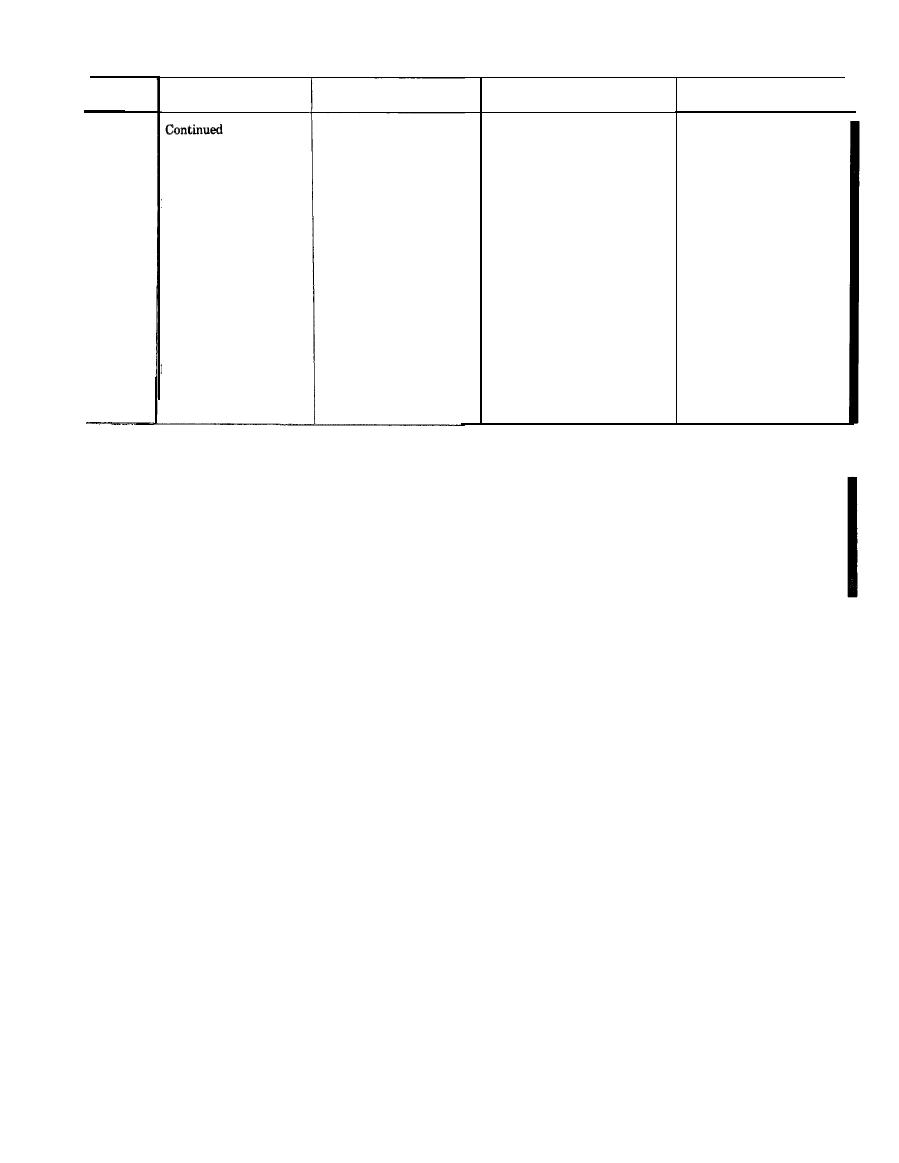 |
|||
|
|
|||
|
|
|||
| ||||||||||
|
|  TM 11-6660-204-25
Item
No.
Item
Action or Condition
Normal Indications
Corrective Measures
20
If one or two advance speed
Set at 2 (RD-88C) only).
Chart advances 2-inches per
for the RD-88C are incor-
minute.
rect, inspect/repair the me
chanical chart drive mecha
nism.
21
Rawin time-print (TPO).
Replace S503 or C502.
Set to OFF.
Control recorder TPO (Time
AUTO.-OFF-MAN
Print-Only) does not oper-
switch (If the recorder is
ate for any pen position on
not connected to the ra-
the scale.
win sat, omit this test.)
Set to AUTO.
Check circuits of S503 and
Control recorder produces
S504. Adjust setting of
TPO when pen exceed 89 to
S504.
91 chart ordinates.
Replace S503.
Depress switch to MAN.
Control recorder produces
TPO each time switch is de-
pressed.
POWER switch.
22
R e p l a c e POWER switch
Set POWER switch.
Jewel power indicator lamp
S201.
goes out and VOLTAGE
and FREQUENCY meters
indicate zero.
(3) Remove the rear panel to provide access to
tubes.
When trouble occurs, check all cabling, connections,
(4) To remove rectifier tubes V401 and V408 and
and the general condition of the equipment before
series regulator tubes V402 and V409 mounted on
attempting to remove the electron tubes. Isolate the
the power supply chassis, release the safety clamps
trouble, if possible, to a particular unit or section of
around the base of the tube before pulling the tube
the equipment. Gain access to the suspected tubes
from it's socket. Be sure that the safety clamp is
and follow the procedures as outlined in b below. If
tightened after the new tube has been placed in the
tube failure is suspected, and a tube tester is not
socket.
available, proceed as outlined in c below if this proce-
b. Using Tube Tester.
dure fails to clear the trouble, follow the procedure
(1) Remove and test one tube at a time. If it is
outlined in d below.
necessary to remove more than one tube at a time,
CAUTION
label each one so that it may be replaced, if satisfac-
Do not rock or rotate the top of a miniature
tory, in its original socket.
tube when removing it from its socket;
(2) Replace a tube only when there is an obvious
pull it staight out. Rocking or rotating
defect, such as a broken glass envelope, open fila-
the tube causes the pins to bend and may
ment, broken lead, or connecting prong, or when a
break the weld where the pin enters the
test in a tube tester or other equipment shows the
glass. A high resistance or intermittent
tube to be defective.
joint also may develop. If tube pins get
(3) Do not discard a tube because it tests on or
bent, staighten them in the sockets pro-
near the minimum test limit of the tube tester. Some
vided for that purpose in the bottom of the
new tubes test near the low end of the acceptability
cabinet.
range of the tube specifications. These tubes provide
satisfactory service over a long period of time, even
a. Access to Tubes. To gain access to tubes for
though they remain at or near this low limit value.
testing or replacement, proceed as follows:
(4) Do not discard a tube merely because it has
(1) Operate the POWERLINE circuit breakers
been in use for a specific length of time. Satisfactory
to the OFF position.
operation in a circuit is the final proof of tube quality.
(2) Remove the rear panel retaining screws at
the rear of the cabinet.
|
|
Privacy Statement - Press Release - Copyright Information. - Contact Us |